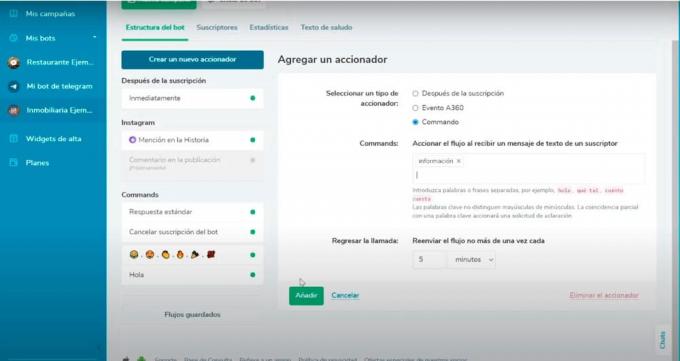The geothermal energy is a renewable energy Whose source lies under our feet, inside the earth's crust, taking advantage of its heat to convert it into electrical or heat energy, continuously 24 hours a day, 365 days a year.

Advertisements
This can be obtained through the heat inside the subsoil, from hot springs, volcanoes and from geysers, and although it has been used since ancient times for cooking and heating, it has not been possible to take advantage of it to a large extent. scale; being a type of energy that offers great advantages and disadvantages, such as those described in the following table:
| Advantages | Disadvantages |
| It is a renewable energy. | It cannot be transported. |
| It is constant 24 hours a day. | It requires large initial investments. |
| It is a clean and sustainable energy. | It has limited availability. |
| Reduces energy dependence. | Toxic gases may be released during the excavation process. |
| It is low cost. | Alters the structure of the soil surface. |
As can be seen in the table, geothermal energy has its pros and cons, and although
Advertisements
Let's see what this geothermal energy is all about and let's delve deeper into its advantages and disadvantages.
In this article you will find:
What is geothermal energy?
The geothermal energy, also called geothermal energy, It is a type of renewable energy generated inside the earth, due to the high temperatures that They occur in the layers of the earth's crust.
Advertisements
basically it works from the large amount of heat concentrated in the subsoil, which is used using geothermal heat pump systems installed in underground value deposits and hot water that are used forair conditioning buildings, to grow plants in greenhouses, and to produce electricity.
For the generation of electricity with this energy, wells are drilled in the earth's crust, reaching more than 2.5 km deep. to take advantage of the heat from underground value deposits and hot water that drive turbines that are connected to generators electricity.
Advertisements
5 Advantages and Disadvantages of Geothermal Energy
Geothermal energy, despite being a renewable and clean geothermal source, many of its advantages and disadvantages, although it is expected that with new technological advances its potential can be used more efficiently in a future.
At present the main advantages and disadvantages that are known of geothermal energy are:
Advertisements
5 Advantages:
It is a renewable energy: As long as the earth exists, it will continue to produce heat in its interior, which can be used continuously without worrying about running out, or compromising the energy resources of future generations.
It is constant 24 hours a day: The heat that emanates from the interior of the earth is constant throughout the year, 24 hours a day, since it is not affected by the conditions climate, making it easier to plan the amount of energy to produce than other types of renewable energy such as solar, wind or hydraulics.
It is a clean energy: Energy can be extracted from the earth without the need to burn fossil fuels, such as coal, oil or gas; In addition, geothermal deposits produce very low levels of CO₂, compared to other sources of energy, being, therefore, considered clean energy or ecological energy.
Reduce energy dependence: Geothermal energy is an excellent alternative to reduce the energy dependence of other countries, by reducing energy imports primary to be able to supply the population, since this can extract it from the surface of the earth, if the subsoil conditions are suitable.
In addition, it is also an excellent ally at the residential level, to avoid dependence on the local electrical network, or other sources. of energy to air-condition homes or other buildings, saving up to 70% of the value of the service bill electric.
It is low cost: Once the initial investment is made, There is no cost to generate energy, since it is freely and freely in the ground, it does not require no specific maintenance, being uses costs only for periodic reviews of the facility.
5 Disadvantages
Cannot be transported: This is one of the biggest drawbacks of geothermal energy, since the energy it generates must be consumed in the same place where it is extracted, hence the facilities Geothermal plants for residential air conditioning use are installed on the ground or land of the same property, and the generation of electricity through it can only be produced for local consumption.
Requires large initial investments: Extracting this type of energy requires a high-cost initial investment, since it uses specialized equipment to be able to drill at various kilometers underground, and install specialized equipment, both for residential air conditioning purposes and for power generation local electric.
These are costs that take many years to be amortized, even if they represent long-term savings.
It has limited availability: This is one of the great disadvantages that has reduced its viability to be used as a source of energy. alternative, since it depends on the conditions in the layers of the earth's crust, specific to each area geographic; therefore, it requires a previous study to determine if the place is suitable or not for the extraction of geothermal energy.
Toxic gases may be released during the excavation process: Drilling the earth's crust to extract this energy can generate accidental leaks of hydrogen sulfide, whose smell is similar to that of rotten eggs, and can also generate leaks of toxic substances, such as ammonia and arsenic, capable of contaminating the water of nearby lakes and rivers, if the necessary preventive measures are not taken during the process.
In addition, it also generates CO₂ emissions, although very low amounts, compared to other types of energy, which is why it is also considered a relatively clean energy.
Alters the structure of the soil surface: Well, it requires drilling several kilometers underground, in addition to the equipment that transforms this energy into heat energy or electricity, are also installed underground, therefore altering the structure of the earth's crust, although it does not generate a great impact at the level landscaped.


